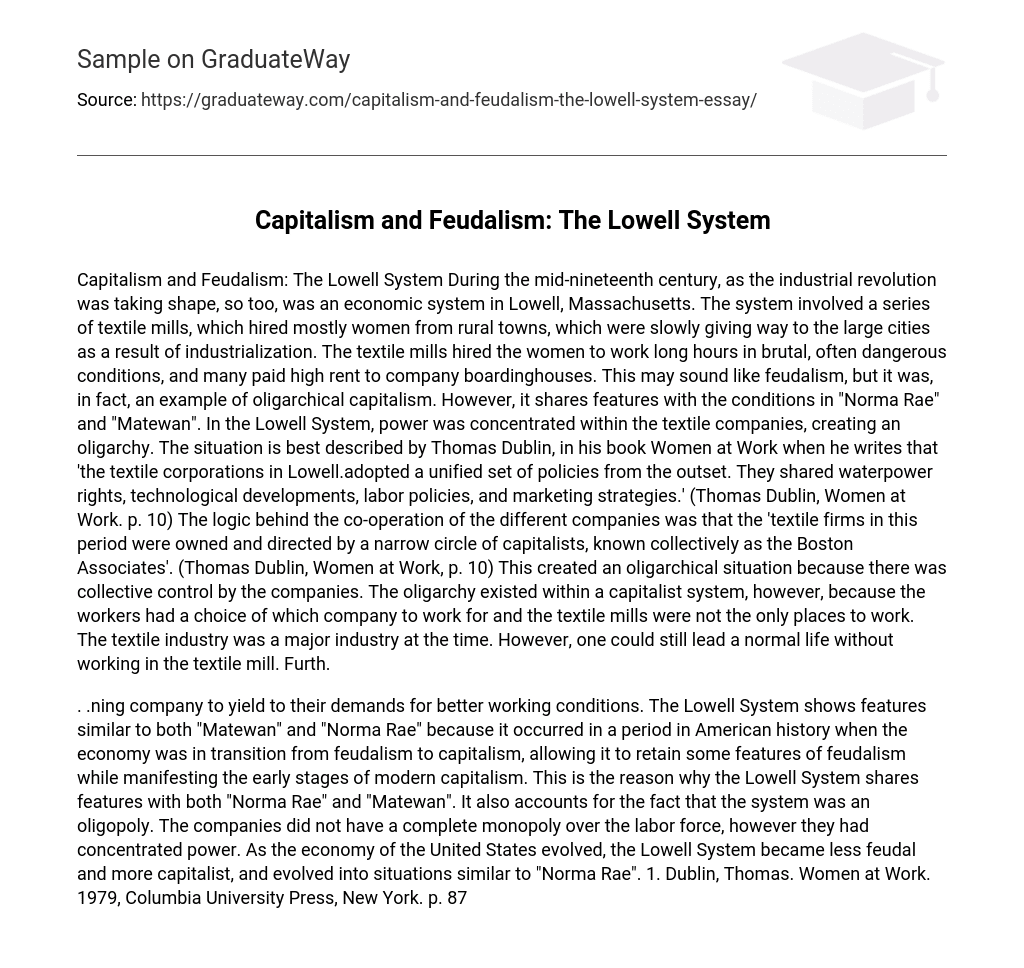Capitalism and Feudalism: The Lowell System During the mid-nineteenth century, as the industrial revolution was taking shape, so too, was an economic system in Lowell, Massachusetts. The system involved a series of textile mills, which hired mostly women from rural towns, which were slowly giving way to the large cities as a result of industrialization. The textile mills hired the women to work long hours in brutal, often dangerous conditions, and many paid high rent to company boardinghouses. This may sound like feudalism, but it was, in fact, an example of oligarchical capitalism. However, it shares features with the conditions in “Norma Rae” and “Matewan”. In the Lowell System, power was concentrated within the textile companies, creating an oligarchy. The situation is best described by Thomas Dublin, in his book Women at Work when he writes that ‘the textile corporations in Lowell.adopted a unified set of policies from the outset. They shared waterpower rights, technological developments, labor policies, and marketing strategies.’ (Thomas Dublin, Women at Work. p. 10) The logic behind the co-operation of the different companies was that the ‘textile firms in this period were owned and directed by a narrow circle of capitalists, known collectively as the Boston Associates’. (Thomas Dublin, Women at Work, p. 10) This created an oligarchical situation because there was collective control by the companies. The oligarchy existed within a capitalist system, however, because the workers had a choice of which company to work for and the textile mills were not the only places to work. The textile industry was a major industry at the time. However, one could still lead a normal life without working in the textile mill. Furth.
. .ning company to yield to their demands for better working conditions. The Lowell System shows features similar to both “Matewan” and “Norma Rae” because it occurred in a period in American history when the economy was in transition from feudalism to capitalism, allowing it to retain some features of feudalism while manifesting the early stages of modern capitalism. This is the reason why the Lowell System shares features with both “Norma Rae” and “Matewan”. It also accounts for the fact that the system was an oligopoly. The companies did not have a complete monopoly over the labor force, however they had concentrated power. As the economy of the United States evolved, the Lowell System became less feudal and more capitalist, and evolved into situations similar to “Norma Rae”. 1. Dublin, Thomas. Women at Work. 1979, Columbia University Press, New York. p. 87





